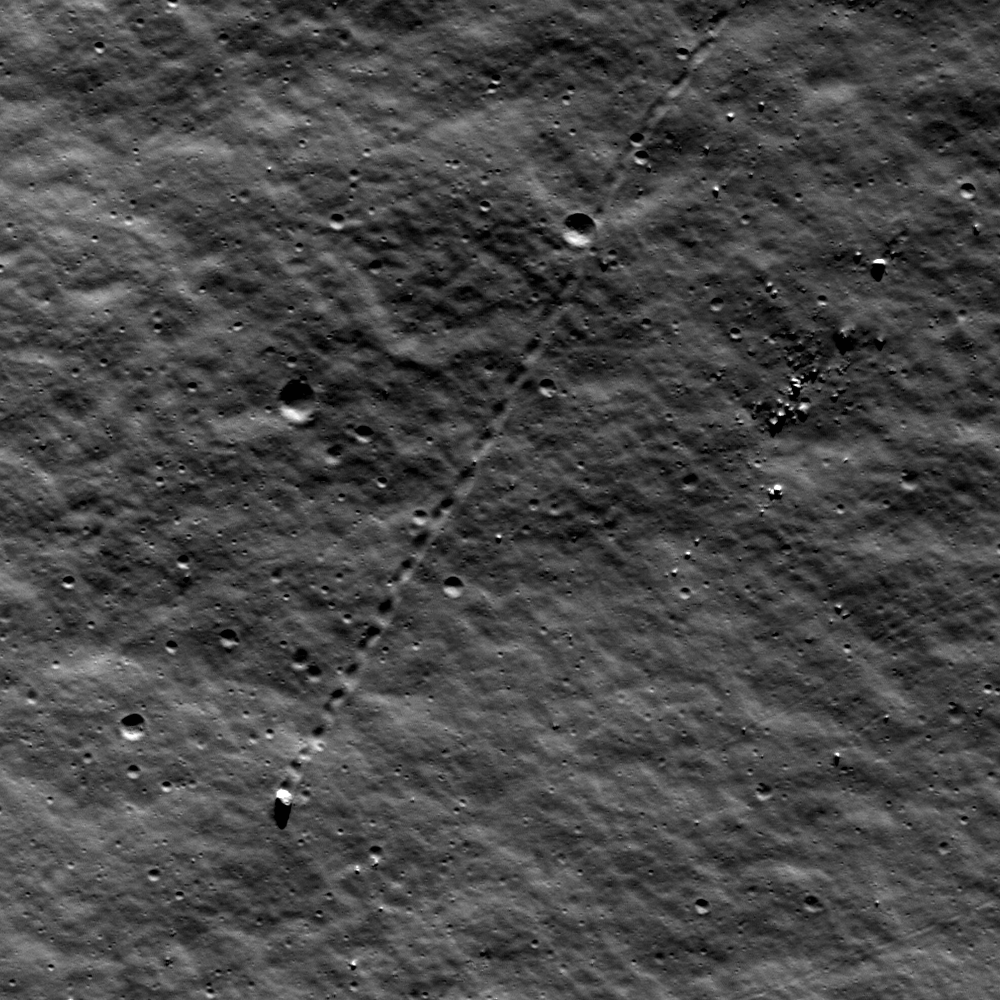[/caption]
One solitary boulder on the Moon apparently decided to take a little journey. The Lunar Reconnaissance Orbiter Camera captured the track of a bouncing, rolling 9-meter boulder that used to sit along the rim of a crater. From the pristine nature of the tracks, it might seem that the rock may have taken its trip just recently. But with the high resolution capability of the LROC, scientists can see that a few tiny craters are superimposed among the track and therefore post-date the time the boulder traveled. Scientists estimate this track was created 50-100 million years ago.
“Though long ago to humans, however, this boulder’s journey was made in geologically recent times,” wrote lunar scientist James Ashley on the LROC website. “Studies suggest that regolith development from micrometeorite impacts will erase tracks like these over time intervals of tens of millions of years…Eventually its track will be erased completely.”
What might have caused the rock to roll so recently? Ashley said perhaps this boulder was sent on its way by ground-shaking caused by the violence of a nearby impact. Perhaps a direct hit by a small meteoroid did the job.
This isn’t the first time LRO has captured evidence of “moving” rocks. See our previous article about several other images of bouncing boulders.
Source: LROC


hahaha, this is cool… Perhaps one of the astronauts kicked it off the hill while “not” walking on the moon? 😀 jk My money is on the regolith which it was lying on closer the rim of the crater slowly shifting downhill with each large enough impact on the lunar surface. The odds of a meteorite hitting it just right are a bit high imo… Very cool observation though 😀
I’d say it rolled all the way at the same time – it’s momentum is obviously highly correlated along the jumps, which wouldn’t be the case should it roll in a slow process. Also several craters cover it’s path, so I’d bet it’s ejecta from impact from pre-astronomy ages.
ah, don’t misunderstand me, I wasn’t saying that that was how it made its way down, but that the movement of the regolith was what dislodged it at the start of the roll. I agree with you that the roll happened in mere seconds, I’m just saying that the support under the boulder gradually shifted out from under it with successive reverberations. Although, thinking about it again I realize that the incline would have to be quite steep for my suggestion to work. On a flattish incline the boulder would merely settle in with each reverberation…
Obvious evidence of gravity-defying aliens playing bocce ball. ;p
It is the Ark.